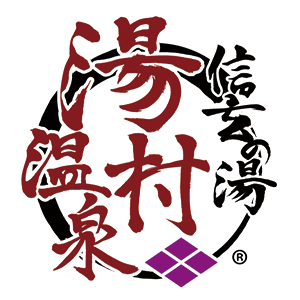Onsen of the Takeda Family: Takeda 3rd generation and his vassals
The ancestor of the Takeda family was Genji Nobuyoshi (later Nobuyoshi Takeda), who was the fourth generation of Kai Genji during the battle of Genpei and the second son of Minamotono Kiyomitsu, the grandson of Sinrasaburo Yoshimitsu.
In April 1180, at the same time as Yoritomo, who raised his army at the intent of King Mochihito, he was raised in Isawa at the same time. Entering Kyoto, the battle of Kiso Yoshinaka, the battle of Ichinotani, the battle of Yashima, the battle of Dannoura and the main battles, he was a master of the battle that participated in most.
It seems that Takeda’s third generation, who had such a master of such wars, also inherited the lineage.
As a Genpei person, Yoichi Asari, a master of bows, will appear as one of Kai-Genji.
Genji’s three major Japanese universities, Yoichi,
Yoichi Sanada is killed brilliantly in the battle of Mt. Ishibashi right after Yoritomo uprising,
Yoichi Nasu shoots down the target of the fan in the battle of Yashima where Yoshitsune wins a surprise attack,
Yoichi Asari plays an active part in Toya in the battle of Dannoura, where tombs and festivals remain in the current rich village.
Three people.
In the Taiga drama in 2007, Yasushi Inoue’s “Furinkazan” was decided on the subject of Kansuke Yamamoto, a famous military master of Takeda Shingen.
Kansuke Yamamoto is a warlord with many mysteries even at birth.
Yumurayama Castle built by Nobutora
Shingen’s father.
There was a mountain of interest on the Tsutsugasaki, and several towers were connected to quickly detect the invasion of Echigo Kenshin Uesugi, which was later viewed as a rival to Shingen.
The last tower is the summit of Mt. Yumura. At that time, there seems to be a mountain castle that also served as a simple lodging for soldiers. It is also reported that “Shingen’s stick road”, which is a military road to Shinano left in Hokuto City, was actually maintained by Nobutora.
In recent years, it has been re-evaluated as a great military commander and politician, as well as Katsurori.
It is said that Shingen was the lord of Kai in his birth because Nobutora unified the land of Kai and gathered good vassals to protect them from foreign enemies.
Nobutora was a very good fighter and won in 1521 when Masanari Fukushima of Suruga marched in a horde of 15,000 people with only 2,000 soldiers.
At that time, Honjin was set up at Chizuka-Hachiman Shrine in Yumura Onsen, where it faced Fukushima and Arakawa.
Some people call this the battle of Iida-Kawara, and it’s called Kai-no-Okehazama.
At this time, it is said that the watchmen issued instructions to the cavalry from Yumurayama Catsle.
As you go down Yumura’s Jinba Street, you will find a stone monument of the battle of Iida Kawara next to the current Prefectural Central Hospital.
There is also a stone monument at Yahata Shrine in Matsushima, Kai, which memorializes this battle, in which both armies died.
“Sengen’s Motoyu”
Shingen’s mother (Mrs. Oi), who had evacuated to Sekisuiji Temple during the battle of Iida Kawara, heard a report that Takeda won on October 10 of the same year and was relieved to give birth to a boy.
This is the birth of Shingen Takeda, a famous Sengoku scholar.
Shingen was good at fighting, but he has twice experienced a bitter victory in his lifetime, close to losing.
In fact, both opponents were Murakami Yoshikiyo, and after a battle of Uedahara, which was the first big defeat, he had a 30-day hot spring treatment at Yumura Onsen (at that time called Shima no Yu) to heal the wound. Has been reported.
However, at that time, I think that Yumura Onsen was visible to the naked eye from the Tsutsugasaki palace.
According to the Koyo Gunkan, it is said that Shingen himself had cured himself after the battle of Shiojiri Pass.
In a novel by Jiro Nitta, after the second battle in Kawanakajima, Koihime lost his labor cough (tuberculosis) and Shingen himself healed his weakened body with long life in battle in Shima no Yu (Yumura Onsen). And since then, regardless of the presence or absence of the war, Shima-no-Yu attended the military ceremony of the Tsutsugasaki Mansion and is depicted as his house.
The name of Koihime is the name of the princess of Suwa that appears in Jiro Nitta’s “Shingen Takeda”, and is named after Lake Suwa because the author is from Suwa. It is said that it was done.
In addition, the name of it who appears in Yasushi Inoue’s “Furinkazan” is called Yufu-hime, and it is said that the author wrote while watching Yufudake at Yufuin (now Yufuin) in Oita Prefecture.
“Koike Village and Katsuyori”
It is reported as the lucky general who succeeded the family by the fourth son of Shingen, but the story of the hot spring is not suitable for such a victory.
Katsuyori is said to be a child of Shingen’s concubine, which is described in the literature as “Suwa Goryonin”, but in reality this part seems to be a novel.
Similarly, Shingen’s labor cough is said to be a creation.
Katsuyori’s tooth mound is housed in Hosenji Temple, a 15-minute walk from Yumura Onsen.
“Oni no Yu”
Tada is a great general of the Takeda family who served with Nobutora and Shingen.
He is also Shingen’s half brother.
Many legends of extermination have been reported because he was good at night attacks and was a master in crackdown on fire bandits.
One of them is the Oninoyu legend of Yumura Onsen.


